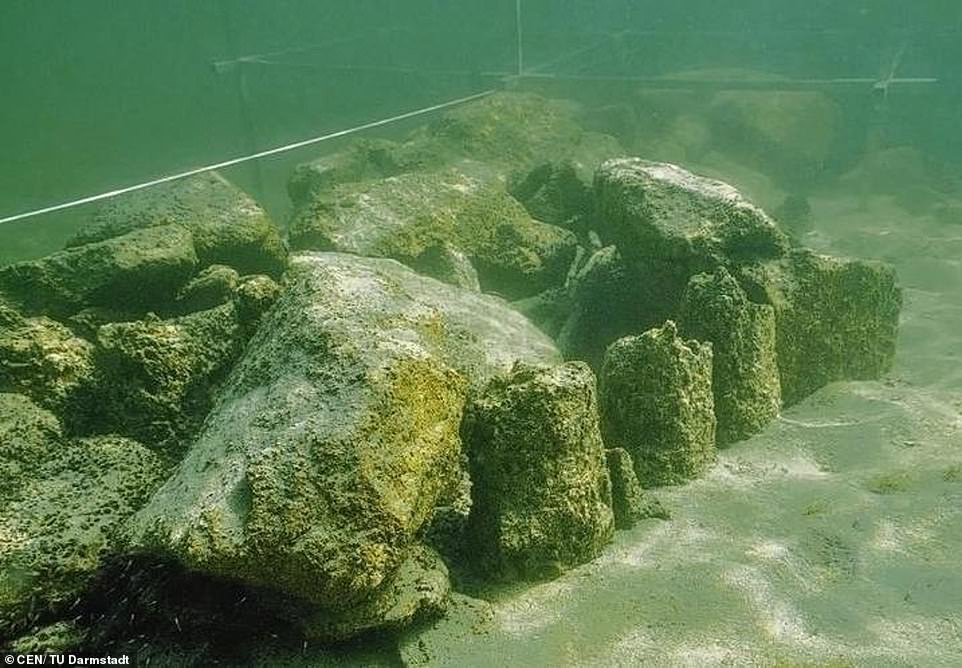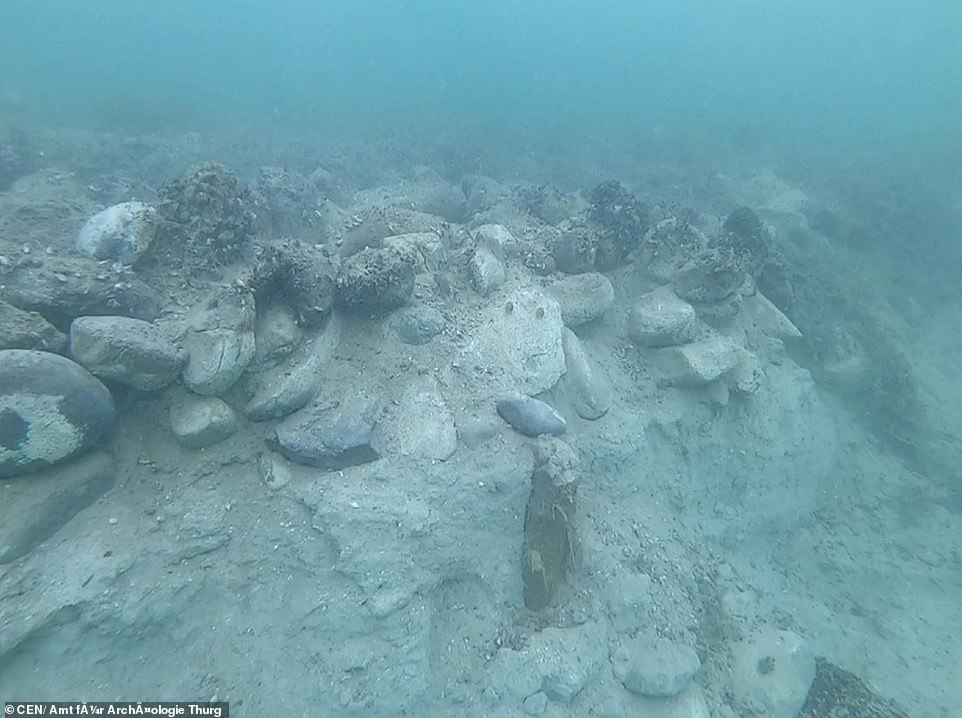Gary sent in this link to https://www.dailymail.co.uk/sciencetech/article-7520961/ … archaeologists claim that a range of mysterious man made stones submerged beneath the surface of Lake Constance, on the Swiss side, are 5000 years old. They have done some exploratory C14 dating, they say, and confirm (roughly so) that they were constructed around 3000BC (or thereabouts). Do they have a connection with the drowned pile dwelling on Swiss lakes? These were overwhelmed in a catastrophic manner – but it has been all quiet on this front in recent years (or at least as far as the UK is concerned). That is a trifle surprising as it has been recently confirmed that crannogs and lake dwellings in the UK go back as far as the Neolithic – and we even have a well known excavation of such a pile dwelling in the Fens. The archaeologists say the stones go back to the Neolithic period but it is not clear what they are. It has been suggested they might be cairns (a row of them) minus the earth (washed out by the lake waters). Basically, what is left is a pile of stones – and they stretch some distance as if following a former contour …
 … They are currently 15 feet below the surace of Lake Constance. Geologically, the stones rest on post glacial banded lake deposits and are situated above the underlying upper edge of a morraine (presumably dating back to the Late Glacial Maximum). A source described them as cairns which is interesting as in the UK earthen mounds sometimes contain a stone (megalithic) construct – such as the chamber at West Kennet. Cairns are usually a more solid type of structure with an outward facia of stones (big and small) without the earth cover. THe piles of stones appear to run parallel with the shoreline. Finally, we are told that lake dwellings may be much deeper under the water. They may exist out in the lake or they may have been eroded away by water action.
… They are currently 15 feet below the surace of Lake Constance. Geologically, the stones rest on post glacial banded lake deposits and are situated above the underlying upper edge of a morraine (presumably dating back to the Late Glacial Maximum). A source described them as cairns which is interesting as in the UK earthen mounds sometimes contain a stone (megalithic) construct – such as the chamber at West Kennet. Cairns are usually a more solid type of structure with an outward facia of stones (big and small) without the earth cover. THe piles of stones appear to run parallel with the shoreline. Finally, we are told that lake dwellings may be much deeper under the water. They may exist out in the lake or they may have been eroded away by water action.
PS … Velikovsky in 'Earth in Upheaval' mentioned lake dwellings (erected on wooden piles driven into the ground). Remains of them exist in Scandinavia, Germany, Switzerland and northern Italy he told us and at some point a 'high water' catastrophe occurred and the villages were overwhelmed and covered in sand and silt etc. They remained abandoned for centuries until rebuilt during the Bronze Age – until they were overwhelmed once again at the end of the LB period. Velikovsky's dating is well out of sync with modern dating. The book was published in 1955 but the research was carried out in the 1940s. Gams and Nordhagen made a survey of German and Swiss lakes (and fens) and they concluded that strong tectonic movements were involved. The lakes suddenly lost their horizontal position, one end often being tilted upwards – and the opposite end of the lake, downwards. The old strand line, they said, ran obliquely to the horizon. The water level of Lake Constance rose by 30 feet – and there is evidence of the lake tilting. The high water catastrophe, they proposed, was accompanied by climatic change. These shifts in climate are known to have occurred at the back end of the 4th millennium, mid to late 3rd milllennium, and towards the end of the 2nd millenniums BC.
Note … Velikovsky's dates often go back prior to the development of C14 methodology and it is a fact that he favoured dates of 1500BC and the 8th century BC in order to comply with his timeline in 'Worlds in Collision'. Once C14 dating came in things changed and Velikovsky's 1500BC became 2300BC in the articles of Euan MacKie (and taken up subsequently by Moe Mandelkehr). The 1500BC date was derived from Biblical numbers and was never a purely archaeological or scientific date. In spite of this both side may be wrong if the stones go back as far as 3000BC – pushing it further back in time. We know there was considerable uplift in the Alps at that point in time as Oetzi was left stranded on top of the mountains and engulfed in a glacier as temperatures plummeted.
